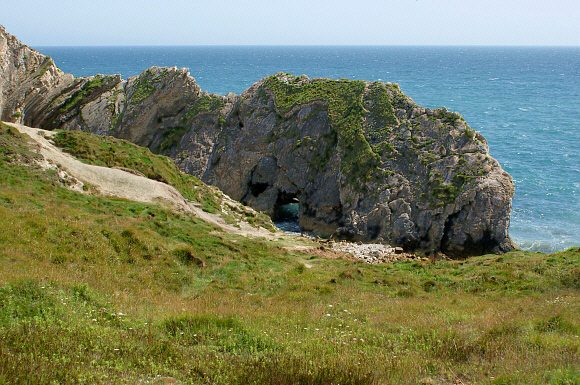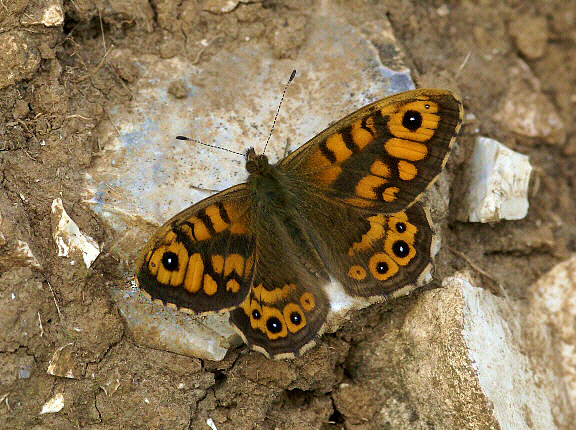Coastal grasslands in southern England are breeding sites for native species including Adonis Blue, Chalkhill Blue, Small Blue, Dark Green Fritillary, Small Copper, Small Heath, Lulworth Skipper and Marbled White. They also function as temporary breeding sites for many migrant species such as Clouded Yellow, Painted Lady and Red Admiral.
Many of these sites are owned by the National Trust, who graze them with cattle or sheep.
 Habitat of Lulworth Skipper, Wall Brown, Marbled White & Dark Green Fritillary � Adrian Hoskins
Habitat of Lulworth Skipper, Wall Brown, Marbled White & Dark Green Fritillary � Adrian Hoskins
 Wall Brown Lasiommata megera, Dorset coast – Adrian Hoskins
Wall Brown Lasiommata megera, Dorset coast – Adrian Hoskins
Erosion
Cliff faces, landslips and eroded slopes are of major importance to the Grayling and Wall Brown, whose larvae feed on fine grasses and require a warm microclimate. Other species which thrive on the steep slopes include the calcareous race of Silver-studded Blue on Great Orme, the Wood White in Devon, and the Glanville Fritillary on Wight.
The Glanville Fritillary is confined to coastal landslips on the south coast of the Isle of Wight – the only part of Britain where the climate is warm enough to support it ( although temporary colonies periodically appear on the Hampshire coast ). Landslip habitats are by definition transient, and only remain in suitable condition for the butterfly for a few years before becoming overgrown, so the colonies are short-lived and the butterfly depends on the creation of new landslips for it’s continued existence.

Glanville Fritillary Melitaea cinxia, male, Wheelers Bay, Isle of Wight – Adrian Hoskins
